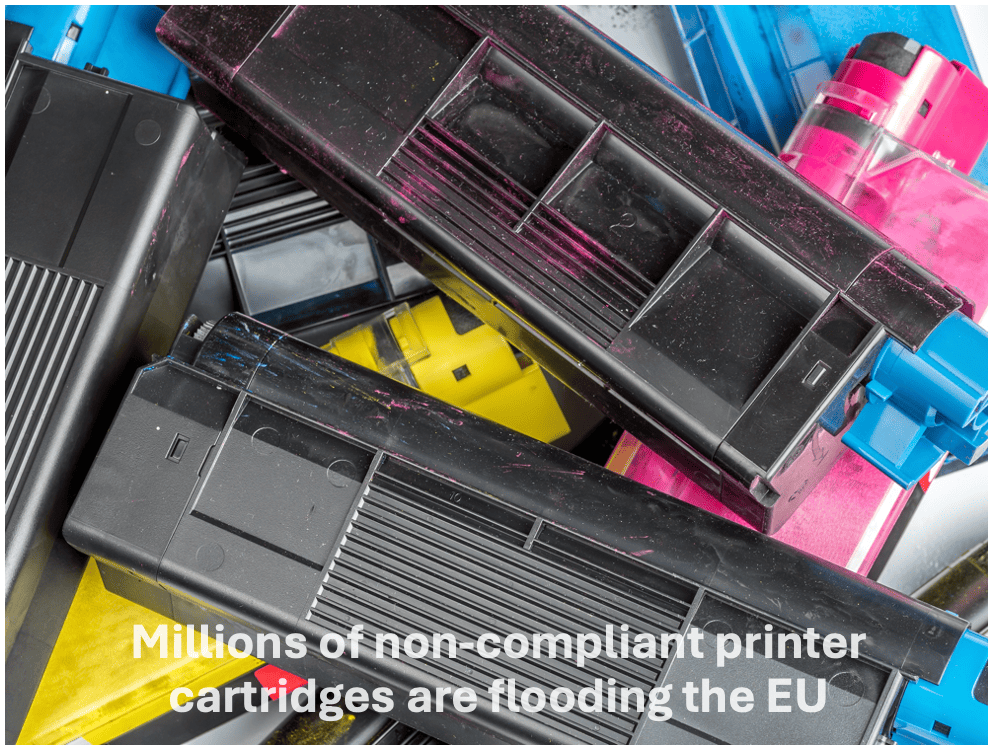WEEE Directive: Time for Ambitious Reuse Targets and Strong Enforcement
July 4, 2025

The European Commission’s newly published evaluation of the Waste Electrical and Electronic Equipment (WEEE) Directive confirms what ETIRA has long stated: the legislation is no longer fit for purpose. With collection targets widely missed, critical raw materials lost, and unfair competition distorting the market, the EU must act decisively to bring reuse and remanufacturing to the forefront of the circular economy.
“Linear manufacturers are not the right actors to lead the change,” said ETIRA President Javier Martinez. “WEEE keeps growing faster than it is being treated. In sectors with high circular potential, like imaging, we need to be bold — and we need to establish ambitious reuse targets now.”
The WEEE Directive, which governs the collection and treatment of electrical and electronic waste across the EU, has been in place for over two decades. While the Commission’s evaluation describes the legislation as “relevant, coherent and proportionate”, it also identifies five major shortcomings:
- Poor collection rates
- Limited recovery of critical raw materials (CRMs)
- Fragmented Extended Producer Responsibility (EPR) schemes
- Inconsistent treatment standards
- An outdated product scope
In 2022, only three Member States met the EU’s 65% collection target. Nearly half of the WEEE generated in the EU is not being collected. Valuable materials, such as copper, gallium, tungsten, and rare earths, continue to be lost to landfills and incineration.
For ETIRA and the imaging equipment reuse sector, these findings confirm that the current system disproportionately benefits single-use, linear models, especially new-build cartridges and printers that are imported into the EU without contributing to national EPR systems.
“For every single-use clone that enters, two reuse cycles are lost,” said Martinez. “The empty OEM cartridge is not reused, and the clone cannot be reused. That is devastating for circularity.”
Unfair competition from non-compliant, low-quality imports, often sold online, continues to undermine efforts by legitimate remanufacturers. The Commission itself flags the failure to enforce existing rules, particularly with online marketplaces. ETIRA has repeatedly raised this issue in relation to RoHS enforcement, with little tangible result.
“Voluntary compliance is not working. Enforcement must now be central to WEEE reform,” Martinez added. The new WEEE should create a separate category for cartridges, with a minimum reuse target of 30% -40%, gradually growing to 80%-90%. The technology and infrastructure to do that exists; what is missing is the economic incentive: our locally produced, environment-friendly alternative cannot compete with the thousands of polluting, cheap, single-use, non-OEM cartridges dumped on the EU market every day.
The evaluation also references the EU’s upcoming fully digital Waste Shipment System, which is expected to be implemented in 2026.
The WEEE Directive was a landmark moment for the imaging sector in 2001, and led to the creation of ETIRA the following year. Today, with the Circular Economy Act on the horizon, the EU has a second chance to get it right.
ETIRA stands ready to work with policymakers to ensure that the revised WEEE framework delivers:
✅ Strong reuse targets
✅ Strong enforcement
✅ Clear rules for high-quality remanufacturing
✅ A level playing field for all producers